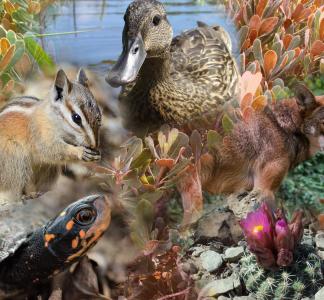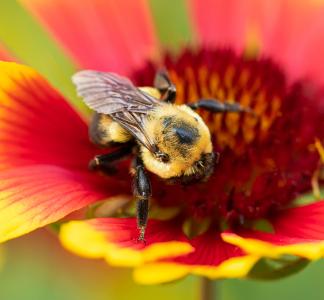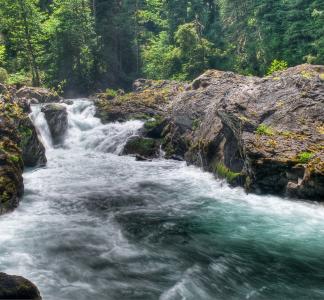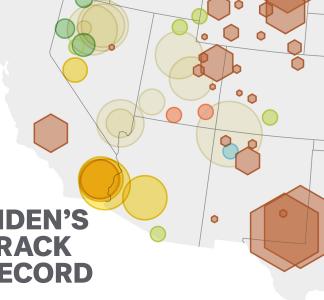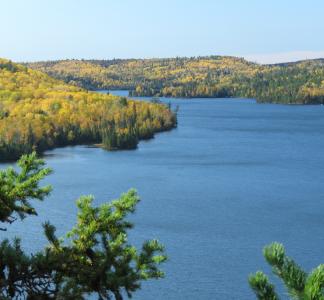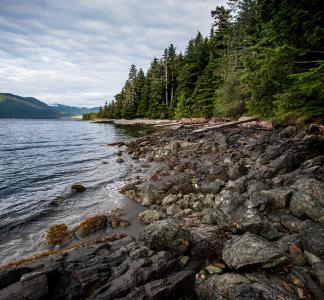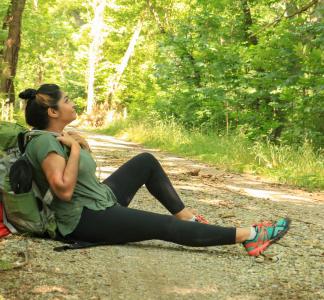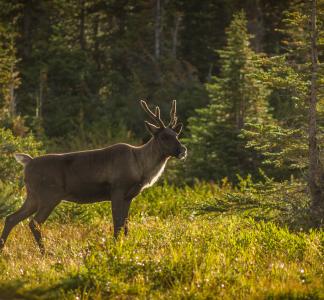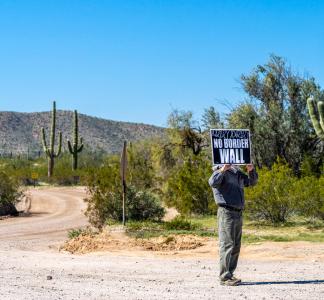Protect Nature. Life Depends on It.
Every day, runaway development eats up more of our dwindling wild nature. In fact, just 14 percent of land here in the U.S. is protected from large-scale threats like drilling, mining and road-building. That human-caused nature loss crisis, along with climate change, is killing off species, damaging communities and degrading quality of life. The resulting struggle for basic needs like food and clean water worsens racial and social inequity. The time has come to re-imagine our public lands as a critical solution for those crises and part of a more just, equitable and sustainable future.
By protecting and connecting an intact network of lands and waters that includes those remaining wild islands—places like national parks and wilderness areas—we can ensure wildlife are able to migrate, adapt and endure in the face of the climate crisis and other threats. This will also help people, who rely on nature for food, water and refuge.
These wild places also bolster our ability to combat climate change itself and blunt its worst impacts. Forests and other landscapes have great capacity to trap greenhouse-gas pollution, and intact habitat like wetlands can buffer communities against the worst effects of flooding, storm surges and other extreme weather.
Working with local communities and heeding both rigorous science and traditional Indigenous knowledge, we’re building a network of lands and waters that will sustain people and nature for generations to come.
What we're doing
-
Securing a network of interconnected lands and waters
We work to protect a network of lands and waters that will sustain communities and allow wildlife to migrate and adapt without being blocked by roads and sprawling development
-
Conserving old-growth forests
We prioritize protecting intact old-growth forests, which are especially important as habitat for threatened species, and the watersheds they safeguard. These forests also help trap climate pollution and provide refuge from extreme heat and other hazards.
-
Expanding protection of national wildlife refuges and national monuments
Increasing and strengthening management of national wildlife refuges, national monuments and other lands and waters will provide animals and plants space and resources they need to survive.
-
Tackling climate change head-on
Phasing out fossil-fuel development on public lands is a crucial step in stemming the deterioration of natural habitat and mass extinction crisis, and so is conserving landscapes that trap and store climate pollution
What is the extinction crisis? 5 key facts
Photo credits in body
6 ways extinction and nature loss hurt people
Kirsten Strough, USDA, Flickr
Why protecting 30% of lands and waters is critical
Chet Williams, Flickr
Biden’s record on public lands and waters — in 3 maps
Toxic mining leases canceled next to Boundary Waters wilderness
Steve Robertsen, USFS
Protecting wildlands is key to solving the climate change puzzle
Nelson Guda
How the U.S. will protect "America the Beautiful" to benefit all communities
Ambreen Tariq (@brownpeoplecamp)
Logging-free forests are critical for threatened wildlife
Thomas Hartmann via Wikimedia Commons
Crossing the divide: 5 stories along the U.S. border wall
Jim Gillett
